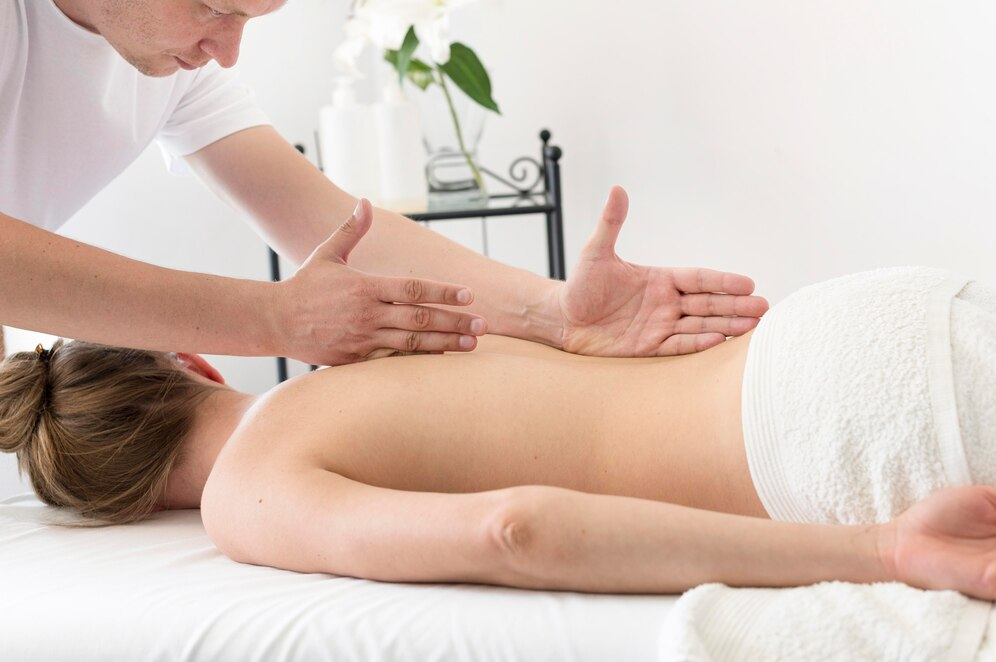
Massage therapy, previously a luxury spa delight, is now recognized for its therapeutic worth in mainstream and complementary health care. Massage inclusion in your wellness program may improve recovery, reduce pain, and increase overall well-being. This blog demonstrates how massage therapy is effective in collaboration with conventional medical treatments and complementary therapies in treating diseases holistically.
How does massage therapy complement conventional medical treatments?
Massage therapy complements conventional medical treatments by reducing pain, improving circulation, and promoting relaxation. It is often used alongside physical therapy and medication to enhance healing outcomes.
Massage therapy presents a holistic mode of natural pain management once integrated with conventional treatments. It reduces reliance on drugs since it acts to relax muscles as it increases blood flow to accelerate healing.
Massage therapy can, therefore, become a significant accompaniment to chemotherapy treatment of patients, or those that undergo surgery, in enabling them to deal with some the undesirable side effects created by such treatments, such as pain and anxiety. This holistic practice provides the body’s healing process at both physical and mental levels. It provides a whole treatment plan to improve various dimensions of health.
What are the benefits of combining massage therapy with complementary therapies?
Combining massage therapy with complementary therapies like acupuncture or chiropractic care enhances relaxation, reduces pain, and supports overall health. These therapies work together to provide holistic treatment.
The combination of massage therapy with other complementary practices seems to give an effect whereby the benefits of the complementary procedure are increased. For example, acupuncture can remedy energy blockages while massage therapy helps improve circulation and flexibility in the muscles.
While chiropractic treatment adjusts the spine, massage therapy can ease muscle spasms for their effects to last. These complementary treatments address the overall illness and not just its symptoms, so healing patients on multiple dimensions becomes possible. This approach leads to better physical, emotional, and mental health.

Can massage therapy help in recovery from surgery or injury?
Massage therapy aids in post-surgery or injury recovery by reducing swelling, improving mobility, and alleviating pain. It accelerates the healing process by increasing blood circulation to affected areas.
After any surgery or injury, most people undergo a natural body healing process. Such healing, however, tends to be slow and painful. Massage therapy also assists in healing by breaking down the scar tissue, helping improve mobility and swiftly recover from the injury.
It also induces relaxation and reduces tension and anxiety that usually accompany the healing process. From muscle strains to joint surgeries and even other physical traumas, massage therapy helps in regaining function and alleviating discomfort.
What types of complementary therapies work well with massage therapy?
Complementary therapies such as acupuncture, chiropractic care, and aromatherapy work well with massage therapy, enhancing pain relief, relaxation, and healing.
Some complementary therapies can be used together to enhance massage therapy release blocked energy pathways through acupuncture and enhance circulation using massage. Chiropractic treatment primarily centers around spinal adjustment, which proves to be a good addition to massage in relaxing stiffened muscles.
Massage then assists in helping patients relax and ease tensions with the aid of aromatherapy, which employs the use of essential oils. With each therapy working together, these can give a better blended and whole technique into healing, targeting physical pain, yet aligning that with emotional well-being.

How do healthcare providers collaborate with massage therapists for holistic care?
Healthcare providers collaborate with massage therapists by integrating treatments into patient care plans, focusing on pain management, injury recovery, and overall wellness.
Healthcare providers and massage therapists are increasingly being pulled together in holistic care settings. Doctors frequently send patients to physical therapists, but this is always part of an overall treatment course.
This may include post-operative care, the provision of pain management for chronic conditions, and addressing matters like anxiety or depression in the mind. The general aim is to improve the quality of life for the patient by not only working on physical health but also exploring emotional and mental health concerns. Such collaboration will bring the care more to the needs of the patient and make it more effective as well.
Conclusion
Massage, taken with traditional and complementary therapies, can provide an all-around approach to healing when combined. It works very well in combination with medical treatments, improving recovery and reducing pain, and therefore is healthy overall. It entails a balance of health strategy for both body and mind.

